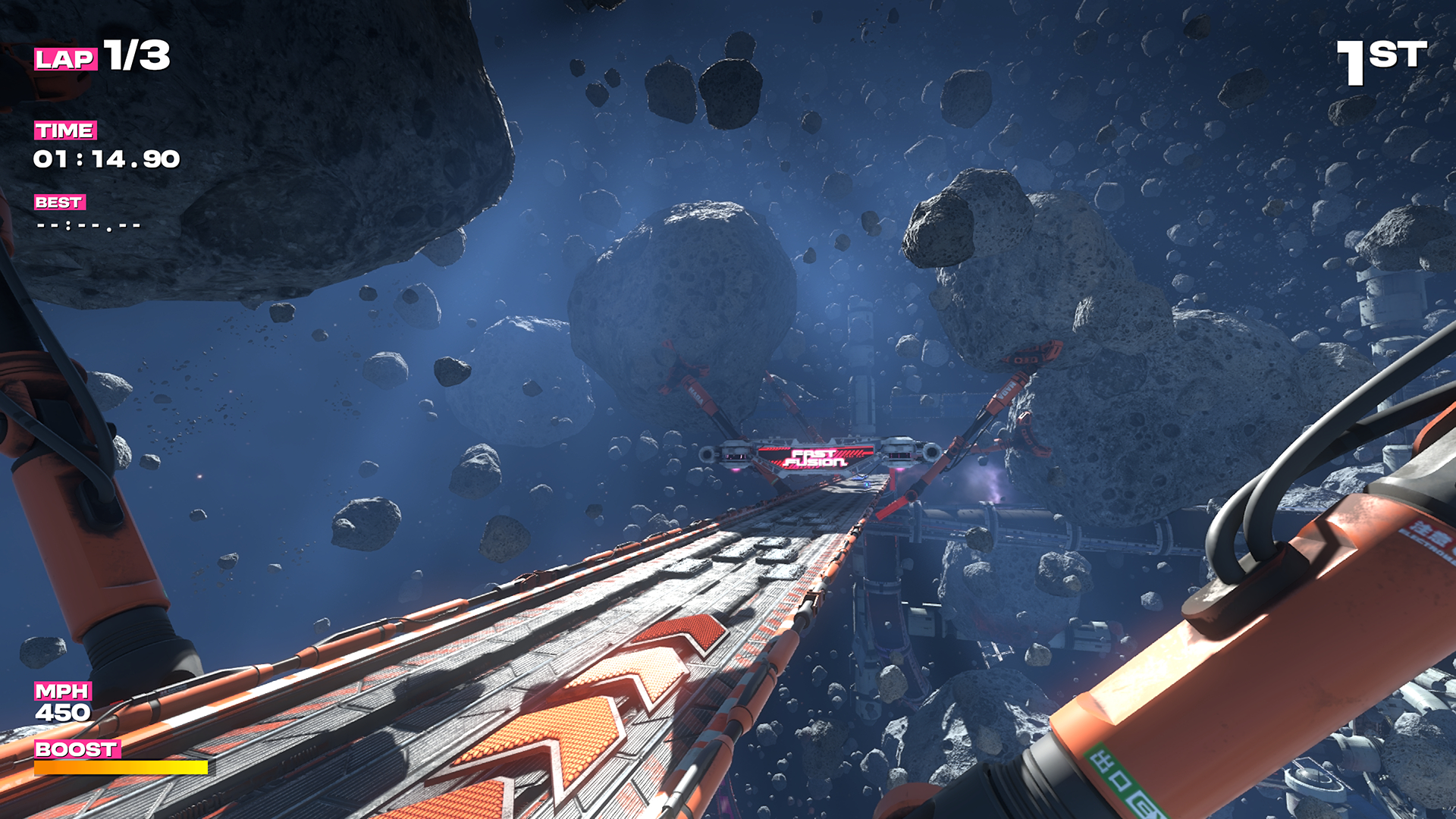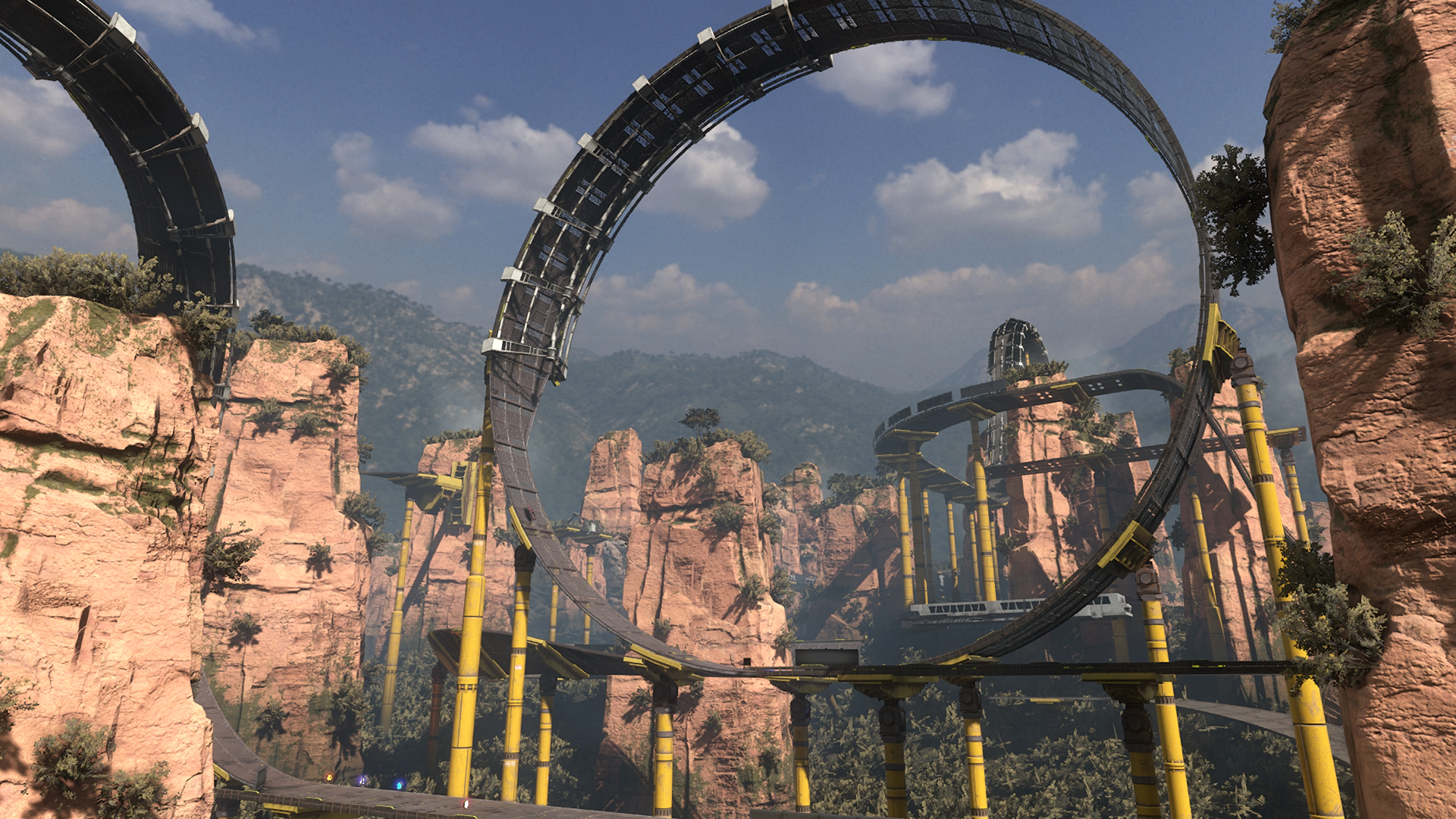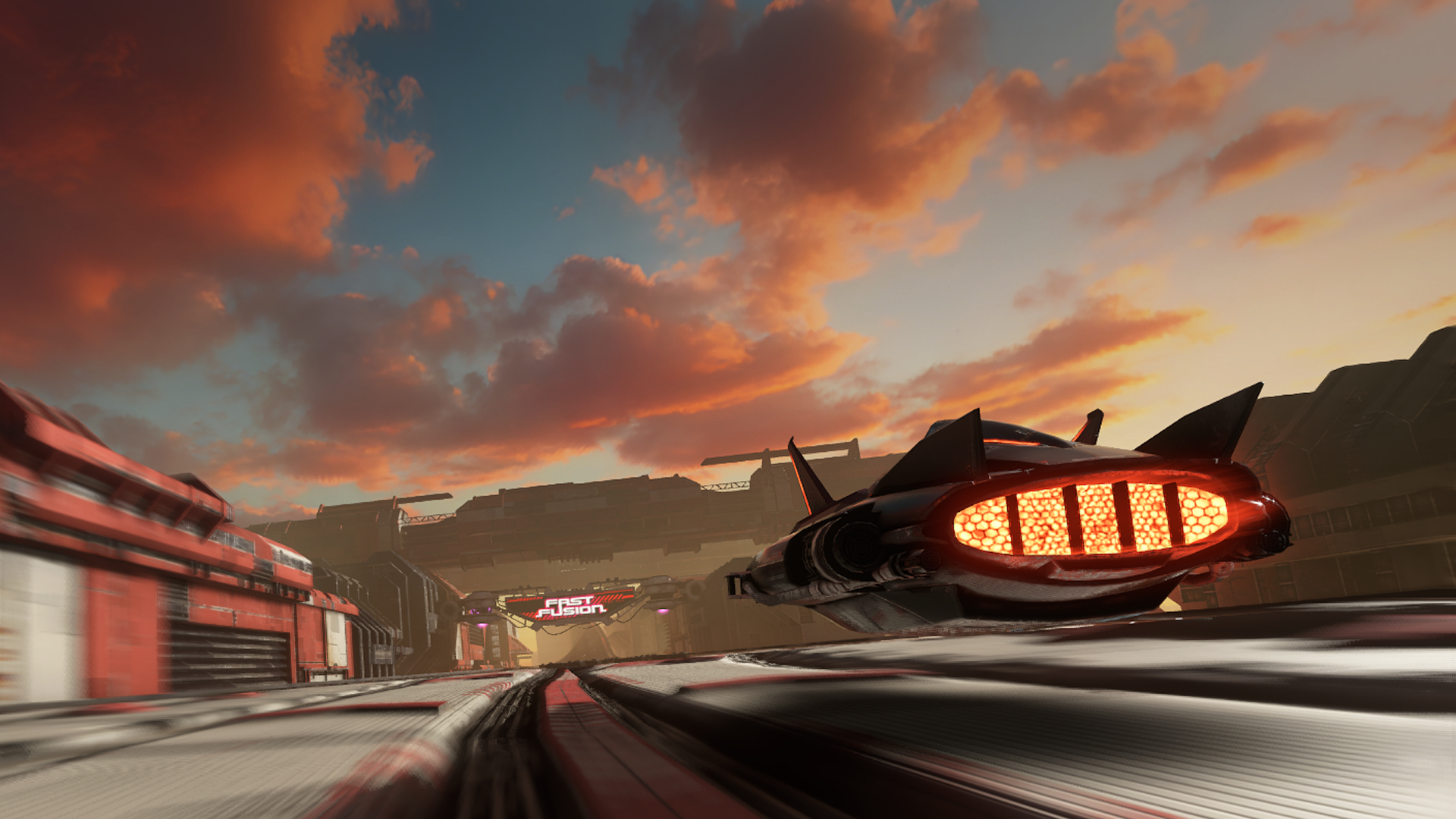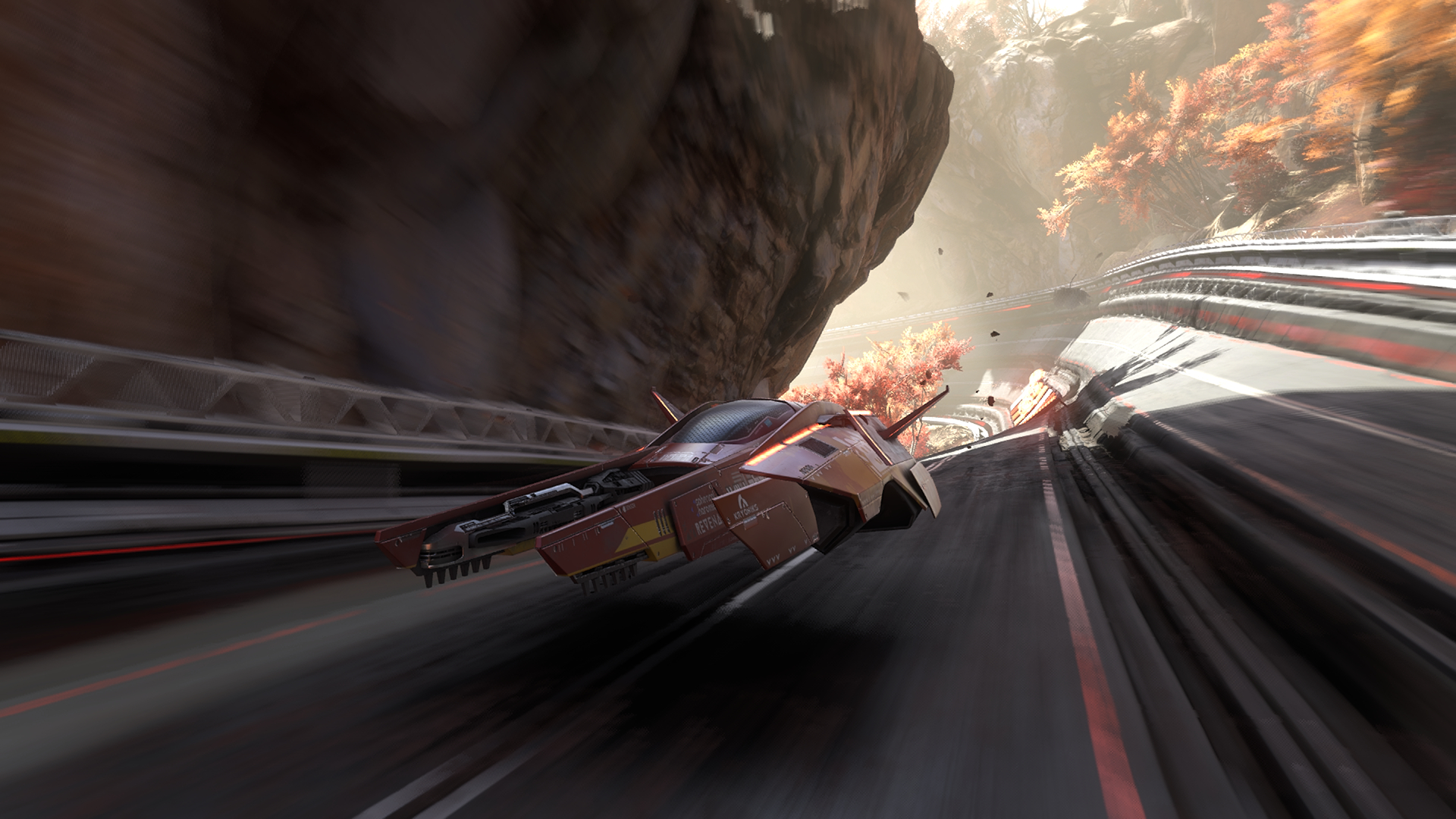TechRadar Verdict
Fast Fusion is a very impressive showcase of the Switch 2’s graphical capabilities. A decent range of tracks and the awesome fusion mechanic definitely make it worth checking out (especially at its unbelievably low price tag), though some frustrations with progression and borderline unfair AI rubber-banding hamper the overall experience.
Pros
- +
Visually stunning
- +
A wide variety of graphical settings
- +
Vehicle fusion is really cool
- +
F-Zero-like Super Hero mode is a lot of fun
- +
Aggressively affordable price
Cons
- -
No online play
- -
Progression has a bit of a grind to it
- -
Vehicles don’t feel very anti-grav-like
- -
Horrendous AI rubber-banding
Why you can trust TechRadar
Platform reviewed: Nintendo Switch 2
Available on: Nintendo Switch 2
Release date: June 5, 2025
Even though I didn’t love anti-grav racer Fast Fusion as much as I wanted to, I still think you should absolutely buy it. Its $14.99 / £13.49 price tag on the Nintendo eShop is quite frankly a steal, and a very fair price considering what you’re getting from this Switch 2 launch game. There’s not a metric ton of content here, and it is an experience you can get the most out of in around 10-12 hours, but that low cost of entry is worth it for the presentation alone.
Fast Fusion is arguably the best-looking Nintendo Switch 2 launch game. It might not have the artful whimsy of Mario Kart World, but in terms of sheer graphical fidelity, developer Shin’en Multimedia has delivered in spades. To me, that comes as no surprise; I maintain that 2019’s The Touryst (also by Shin’en) is one of the most visually impressive games on modern hardware, and that’s definitely the case with Fast Fusion, too.
Another reason to buy the game is that its performance is basically bulletproof. Its Quality graphical setting, which I used for the majority of my play time in docked mode, holds 4K resolution at 60 frames per second (fps) at all times, even with some light ray-traced reflections enabled.
But even though Fast Fusion is certainly a looker, it unfortunately falls short as a racing game. While tracks look beautiful, they don’t offer much in terms of variety, usually boiling down to a handful of obstacles and one or two alternate shortcuts. AI drivers also employ an absurd amount of rubber-banding, sticking to your tail like glue even after an extended period of boosting.
I’m also not a fan of how the game handles progression, as unlocking new cups can require huge sums of currency. This has improved since launch, with patches increasing the amount of money you can earn in a championship, but you’ll still find yourself having to grind out an extra run or two just to have enough to unlock the next set of races.
Overall, Fast Fusion is a beautiful, ‘fun while it lasts’ racing game. A lack of online play definitely hurts its longevity, but given how cheap the game is at retail price, I can’t fault it too much for a lack of content, and I did have a decent time with it regardless. It's certainly not one of the best Switch 2 games, but it's hard to argue with the value on offer.
Double or nothing

Fast Fusion is a futuristic, anti-gravity racer, inspired by subgenre legends like F-Zero and Wipeout. The goal is simple: enter a championship, drive faster than your opponents, get money for more vehicles and events, rinse and repeat.
Sign up for breaking news, reviews, opinion, top tech deals, and more.
Your vehicle is capable of boosting and jumping - the latter to avoid obstacles and grab boost tokens floating in the air. Said tokens fill up your boost meter, so collecting them throughout a race is imperative - especially as they also increase the amount of in-game currency you have.
The swap mechanic from Fast RMX also returns, which lets you change between blue and orange forms in order to make use of the same-colored boost pads littered throughout each track. Finally, boosting into an opponent who isn’t boosting will cause them to spin out, hampering their race and netting you some more tokens.
While content in Fast Fusion is light overall, there’s still a decent amount of it to check out. The main championship mode features five cups of three races, split across three speed classes. Local multiplayer (including GameShare) and time attack modes are featured, too.
There’s also Super Hero Mode, which is an additional challenge mode that mimics the F-Zero series’ style of play. Here, your boost gauge is also your health bar, and crashing or running out of health retires you from the race. It’s a pretty thrilling side mode and quite challenging, adding some much-needed replayability to Fast Fusion.
Two become one

Easily my favorite part of Fast Fusion is its titular fusion mechanic. By accessing the Fusion Shop from the main menu, you can not only unlock new vehicles with currency, but also choose two to fuse together into one super-powered machine.
Every combination is accounted for, leading to an extremely impressive array of vehicles. They all have unique looks, liveries, and name amalgamation depending on your chosen two. Not all are made equal, though; the game will let you know how powerful the fusion is on a grading system. For example, a lower rank ‘C’ fusion will have worse stats, but cost less to fuse. Meanwhile, an ‘A+’ beast can get close to maxing out in performance, but will naturally cost more.

I love the titular ‘fusion’ mechanic in Fast Fusion. Combining two vehicles into one for a more powerful craft, it’s always interesting to see the results. Especially when it’s an amalgamation of both crafts, complete with a livery change and a hybridized name. There’s loads to see here, and experimentation is practically necessary in order to beat the more challenging championship events.
You’ll need to rely on the fusion system when tackling the game’s hardest speed classes, too. Not only do AI drivers rarely make mistakes, but they have some of the most egregious rubber-banding I’ve seen in a racing game in quite some time. You can fully maximize a track, hit every shortcut, and spend most of your time boosting, and you’ll still get at least two AI drivers zooming past you on the final lap.
And as I mentioned earlier, racing in general, despite being a futuristic anti-grav racer, feels disappointingly grounded. Vehicles are extremely grippy, and hitting a wall has practically no negative impact. Track design also plays it rather safe - there’s very little in the way of demanding corners like hairpins, meaning braking and tilting rarely get used outside of the final speed class. It’s a far cry from Wipeout or F-Zero GX, where you often really have to wrestle your machine around corners and you are heavily punished for colliding with walls.
Should you play Fast Fusion?
Play it if...
You want a real showcase of the Switch 2’s graphical chops
Fast Fusion is stunning to behold, sporting a high level of graphical fidelity, rock-solid performance, and convincing motion blur and incredible weather effects. The low price of admission is worth it for all those ‘wow’ moments, especially if you own a 4K display.
You want a cheap game that’s actually worth it
The Nintendo eShop’s relationship with cheap games is a sloppy one, but Fast Fusion proves you can still offer a very compelling experience at a budget price.
Don't play it if...
You were hoping for bags of content
Overall, Fast Fusion will probably last you around 10-12 hours if you’re planning on doing absolutely everything. While that’s expected for the price, it certainly doesn’t have the longevity of F-Zero GX or Mario Kart World.
You want a true anti-grav racer
The vehicles in Fast Fusion may as well have wheels, given how overtly grippy they are. The ships all look very cool, but their handling doesn’t exactly scream ‘anti-gravity’.
Accessibility
There isn't much in the way of accessibility settings in Fast Fusion. You can fully rebind controls in the options menu to suit your preferences, as well as enable tilt controls via gyro aiming should you prefer. However, don't expect anything in the way of colorblind settings or other visual options.
How I reviewed Fast Fusion
I played 10 hours of Fast Fusion on Nintendo Switch 2, clearing all Grand Prix and Super Hero Mode content across the three speed classes, while also unlocking most vehicles and playing around a good bit with the fusion system.
I primarily played the game in ‘Quality’ mode, which offers 4K 60fps performance while docked, as well as some basic ray-traced reflections. I also tried out the ‘Ultra Quality’ mode, which increases fidelity further at the cost of a 30fps frame rate. While this mode does look utterly stunning, I much preferred the smoother performances offered by other graphics modes.
For gameplay, my gamepad of choice was the Nintendo Switch 2 Pro Controller, while also using the Joy-Con 2 controllers while playing in handheld mode.

Rhys is TRG's Hardware Editor, and has been part of the TechRadar team for over four years. Particularly passionate about high-quality third-party controllers and headsets, Rhys strives to provide easy-to-read, informative coverage on gaming hardware of all kinds. As for the games themselves, Rhys is especially keen on fighting and racing games, as well as soulslikes and RPGs.
You must confirm your public display name before commenting
Please logout and then login again, you will then be prompted to enter your display name.
